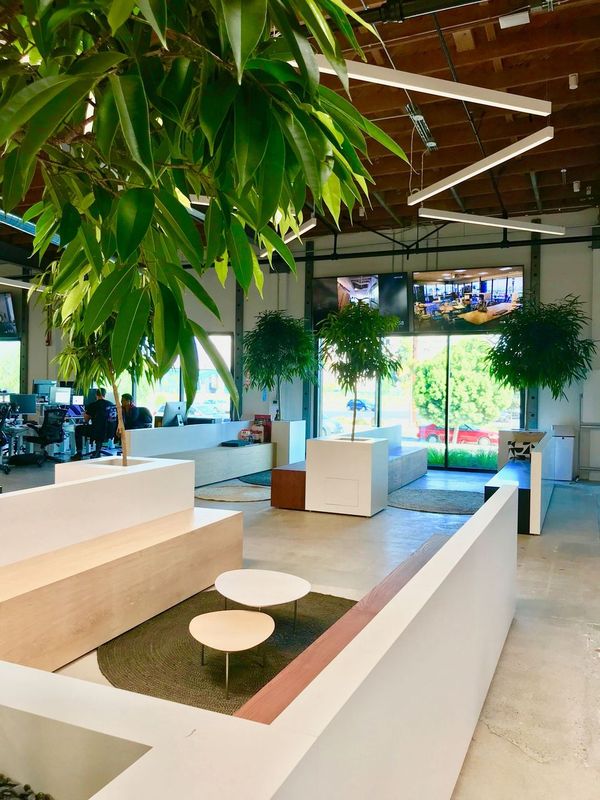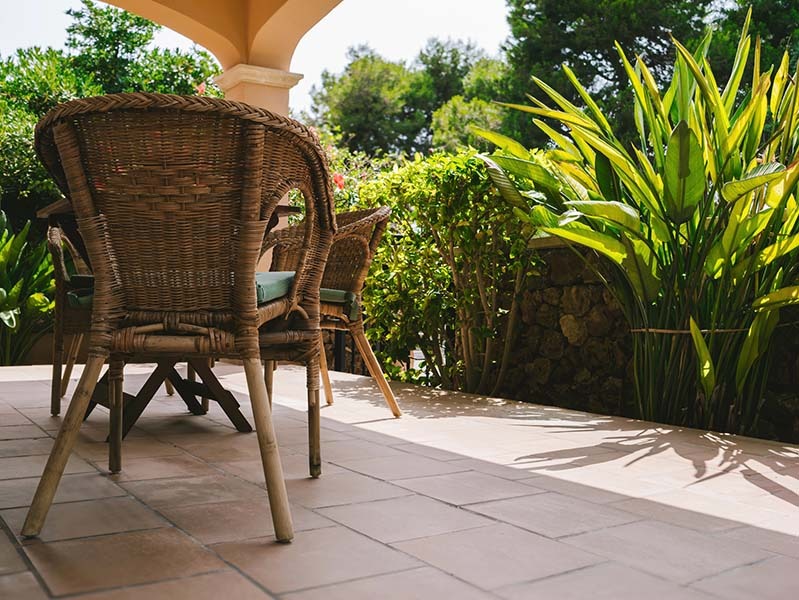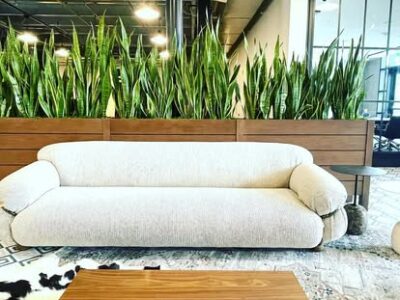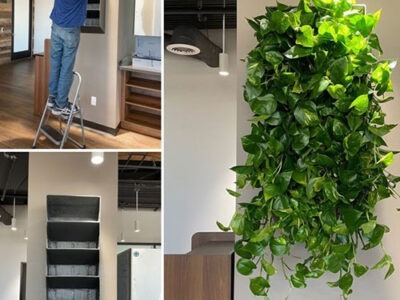Biophilic Design
An approach to design that promotes reciprocity between humans and nature, fostering mutually beneficial relationships through built environments. It is a verb and process, not a noun or product.
Biophilic design is not about greening our buildings or simply increasing their aesthetic appeal through inserting trees and shrubs. Much more, it is about humanity’s place in nature, and the natural world’s place in human society.
Stephen R. Kellert and Judith H. Heerwagen (Kellert et al., 2008: page vi)
Biophilic design is essential for developing healthier, more efficient work environments by strengthening the bond between individuals and nature. Adding natural elements like plants, sunlight, and organic materials can lower stress levels, stimulate creativity, and promote overall well-being. Research indicates that employees in spaces featuring biophilic elements tend to report higher job satisfaction, better concentration, and improved mental health. Emphasizing biophilic design benefits not only employee health and happiness but also contributes to greater organizational success.

the Three Pillars of Biophilic Design
Natural Analogues.
Natural analogues are design elements that replicate the patterns, forms, and textures found in nature often seen in plants, wood, or stone. Biophilic design encompasses not only these natural analogues, but also brings in colors, smells, shapes, and sounds inspired by the natural world.
Nature in the Space.
Indoor plants can regulate humidity, filter light, and improve air quality in ways similar to how natural vegetation functions outdoors. Arranging plants intentionally, such as grouping them together or placing them in a natural way, can mimic the natural environment and improve comfort and overall well-being.
Nature of the Space.
The concept of “nature of the space” in offices, hotel lobbies, schools, and other commercial spaces centers on shaping an open, welcoming environment. The addition of indoor plants enhances this experience by making the space feel more relaxing and naturally connected to nature.
Designing with nature in mind can transform any indoor space, making it healthier and more vibrant. Incorporating indoor plants and organic materials into your space can reduce stress, inspire creativity, and improve well-being.
Sectors Benefiting From Biophilic Design
Less absenteeism, more productivity. Research indicates that when people feel healthier and happier in their environment, they’re more engaged and motivated to do their best work.
“Restorative work environments are spaces designed to provide workers with a closer nature experience, with biophilic elements such as plants, water, natural light, and visual representations of nature. These natural elements in the workplace have been associated with benefits for well-being, mental health, productivity, and worker performance.” (Source: Gonçalves, Gabriela, Cátia Sousa, Maria Jacinta Fernandes, Nuno Almeida, and António Sousa. “Restorative effects of Biophilic workplace and nature exposure during working time: a systematic review.” International journal of environmental research and public health 20, no. 21 (2023): 6986.)
Ríos-Rodríguez ML, Testa Moreno M, Moreno-Jiménez P. Nature in the Office: A Systematic Review of Nature Elements and Their Effects on Worker Stress Response. Healthcare (Basel). 2023 Oct 27;11(21):2838. doi: 10.3390/healthcare11212838. PMID: 37957983; PMCID: PMC10650689. In summary, this study constitutes a significant contribution to the existing body of knowledge by examining the intersection between biophilic design and stress in the workplace. It provides practical and applicable recommendations for employers and workplace designers on how to effectively incorporate natural elements to reduce workplace stress.
Faster recovery, reduced burnout. Patients, providers, and assisted living facilities all experience greater comfort and improved emotional well-being in environments enhanced by biophilic design.
Ulrich RS. View through a window may influence recovery from surgery. Science. 1984 Apr 27;224(4647):420-1. doi: 10.1126/science.6143402. PMID: 6143402.
Park SH, Mattson RH. Ornamental indoor plants in hospital rooms enhanced health outcomes of patients recovering from surgery. J Altern Complement Med. 2009 Sep;15(9):975-80. doi: 10.1089/acm.2009.0075. PMID: 19715461. Conclusions: Findings of this study confirmed the therapeutic value of plants in the hospital environment as a noninvasive, inexpensive, and effective complementary medicine for surgical patients. Health care professionals and hospital administrators need to consider the use of plants and flowers to enhance healing environments for patients.
Improved learning settings lead to cognitive gains. In academic settings, these improvements foster deeper student engagement, enhanced focus, and higher overall academic achievement.
Ghaziani, Rokhshid. 2025. “Re-Thinking Biophilic Design for Primary Schools: Exploring Children’s Preferences” Architecture 5, no. 3: 42. This paper identifies the potential role of biophilic design features in promoting children’s happiness in a primary school from their own perspectives. The empirical study explored children’s preferences related to eight patterns from two categories of direct and indirect connection to nature.
Browning, W.; Determan, J. Outcomes of Biophilic Design for Schools.
Architecture 2024; Heschong, L. (1999). Daylighting in Schools. An Investigation into the Relationship Between Daylighting and Human Performance.
Rodney H. Matsuoka’s 2010. Student performance and high school landscapes: Examining the links. This study aligns with the biophilia hypothesis, which suggests that humans have an innate tendency to connect with nature.
Fadda, R.; Congiu, S.; Roeyers, H.; Skoler, T., Elements of Biophilic Design Increase Visual Attention in Preschoolers. Buildings 2023.
Increased dwell time, higher sales. In the retail industry, inviting natural elements into stores not only encourages customers to linger longer but also leads to stronger brand loyalty and more frequent purchases.
Peer-reviewed studies demonstrate the positive effects of indoor plants and biophilic design on customer behavior in commercial spaces:
Dwell Time Increases:
Joye, Y., & van den Berg, A. (2011). “Is love for green in our genes? A critical analysis of evolutionary assumptions in restorative environments research.” Urban Forestry & Urban Greening. This review finds that green elements lengthen the time spent in retail environments.
Wolf, K. L. (2005). “Business District Streetscapes, Trees, and Consumer Response.” Journal of Forestry. When shown images of greener retail settings, respondents indicated that an acceptable price to pay was 15% – 20% higher for various items.
Brand Loyalty and Purchase Behavior:
Han, H., & Hyun, S. S. (2017). “Impact of hotels’ green practices on brand loyalty: The mediating role of perceived health benefits.” International Journal of Hospitality Management. This study explores how green and biophilic practices in hotels (which directly applies to hospitality-focused retail spaces) enhance customer loyalty by increasing perceived health and well-being benefits.
Biophilic design in hospitality promotes guest well-being and relaxation by bringing nature indoors. It also boosts customer satisfaction and encourages repeat visits.
“In the lodging industry, biophilic design can be applied by providing a view of nature, large windows, water features, or plants. By introducing biophilic elements to a hotel’s physical environment, a guest’s need for connection with nature may be fulfilled. As a result, biophilic design may stimulate emotional states, quality perception, favorable attitude, and behavioral responses in the space. Thus, adding biophilic elements to a hotel’s design will further differentiate the hotel from others, creating and maintaining an added advantage to hotel operations.” (Source: Science Direct: Effects of biophilic design on consumer responses in the lodging industry.)
Han, H., & Hyun, S. S. (2017). “Impact of hotels’ green practices on brand loyalty: The mediating role of perceived health benefits.” International Journal of Hospitality Management.” This study explores how green and biophilic practices in hotels (which directly applies to hospitality-focused retail spaces) enhance customer loyalty by increasing perceived health and well-being benefits. “Based on the data, we suggest that the demand for biophilic buildings will be strongly increased during the post-COVID-19 era.”
Khozaei, Fatemeh, Claus Christian Carbon, Mahdieh Hosseini Nia, and Mi Jeong Kim. 2022. “Preferences for Hotels with Biophilic Design Attributes in the Post-COVID-19 Era” Buildings 12, no. 4: 427.
The nice thing is there’s a movement toward what people want. As a brand, the expectations of guests are leaning toward health and wellness. That means creating biophilic, sustainable and wellness-focused spaces isn’t just a sound investment. It’s doing the right thing.
Brian Vickery Senior Director, Design and Construction, Four Seasons Hotels and Resorts
(Source: Doing the Right Thing: Why Hotels Are Embracing Biophilic Design. Fat Plant Society)
Biophilic design helps create healthier, more welcoming community spaces that encourage social interaction. In government buildings, civic centers, and libraries, natural elements can enhance public engagement, boost productivity, and foster a sense of civic pride, making everyone feel more comfortable and connected.
Lee, Hyo Chang, and Sung Jun Park. “Assessment of importance and characteristics of biophilic design patterns in a children’s library.” Sustainability 10, no. 4 (2018): 987.
Söderlund, J., & Newman, P. (2015). Biophilic architecture: a review of the rationale and outcomes. AIMS Environmental Science, 2(4), 950–969. A study highlighted in this review discusses the Frick Environmental Center in Pittsburgh, a civic environmental education and community facility, where biophilic design strategies led to increased community engagement and provided measurable psychological and environmental benefits to visitors. The review also notes other civic centers where similar gains were observed, including reduced stress and increased satisfaction among public users.
Gray, Tonia, and Carol Birrell. “Are biophilic-designed site office buildings linked to health benefits and high performing occupants?” International journal of environmental research and public health 11, no. 12 (2014): 12204-12222.
FEATURED RELATED POSTS

Take a 10-minute Challenge
Discover a daily routine that can improve your health and well-being, while also deepening your connection to the world around you.
Effortlessly recharge your sense of calmness and reconnect with nature right in your own space, anytime you want, day or night! How? Try out Sit Spot!



